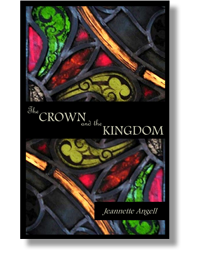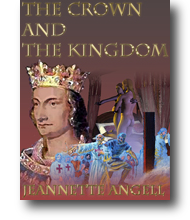
It was a time to play with power, to determine who should rule the world: king, pope, or wizard. It was a time for princesses to fall in love rashly and to marry wisely, and for fortunes to be made and reputations to be ruined.
It was 1300.
The king was Philippe IV, known as Philippe le Bel, and he was responsible for instilling a sense of national consciousness in the heart of a disparate people. But if his reign was marked by triumph, it was also marred by tragedy.

The pope was Boniface VIII. The argument was, originally, over royal rights to a clerical subsidy, but quickly escalated and was put to rest – from Philippe’s point of view – by the first meeting of the Estates General.
Boniface’s health was failing, and in 1303 he died. He was succeeded by Clement V, a Frenchman, who immediately and suspiciously moved the Papal See to Avignon. The hundred-year “Babylonish Captivity” of the Church had begun.
The conflicts between the king of France and the Vicar of Christ did not end with the new papal regime. Philippe’s next target was a religious order: the Templars, warrior-monks during the Crusades and the moneylenders of Europe ever since. The Templars loaned money – and the King of France owed them more money than most people could count. His debt was to cost them their existence.
Jacques de Molay, Grand Master of the Order, was summoned to appear before Philippe to answer to charges of heresy. Rumors were circulating – rumors of idol worship, of black Masses, of infanticide. De Molay denied the charges and dismissed the whole affair, but the rumors persisted. Later that year Philippe made a mass arrest of all Templars in France. Confessions were exacted under torture, and the Templars were burned at the stake.
Jacques de Molay cursed his tormentor through the flames, shouting that before the year was out both the pope and the king would join him before the Heavenly Tribunal, there to stand judgment. Pope Clement had no choice but to support Philippe’s actions, for to condemn the fait accompli would have been to underscore his own powerlessness.
Philippe’s need for control did not stop with the papacy.
During his reign, border skirmishes with Flanders escalated into a full-scale war, a harbinger of the Hundred Years’ War that was to follow. Despite remonstrations from his Council, Philippe repeatedly sent French troops into battles for which they were ill-prepared and ill-equipped, and the cost to France for her king’s pride was enormous.
Nor was he in control of his own household.
His three sons had had marriages arranged for them, all of them to women from Burgundy. Louis, the oldest and heir to the throne, was an imbecile; his wife, Marguerite of Burgundy, had taken a lover when she was fourteen – just months after her wedding. Her daughter, in point of fact, was born a year after that, and much later there would be doubt concerning the child’s legitimacy and right to succession.
The middle son, Philippe of Poitiers, was married to Marguerite’s cousin, Jeanne; this marriage was apparently welcomed by both parties and successful. The youngest son, Charles, married Blanche of Burgundy, Marguerite’s sister. Irresponsible, impetuous, and indiscreet, Blanche had also taken a lover. It was then that rumors about affairs in the royal family began to circulate.
Adultery is treason when the sons of kings are being betrayed.
So it was that Philippe le Bel had to sit in judgment on his daughters- in-law, and condemn them to life in prison for their treason.
He did not live long enough to regret his decision. Jacques de Molay’s prediction came true: a few months after the princesses’ trial, Philippe le Bel died.
The mentally deficient Louis of Navarre became king upon his father’s death, and his first official act was to have Marguerite of Burgundy strangled in her prison cell.
Available for Kindle at Amazon.com.